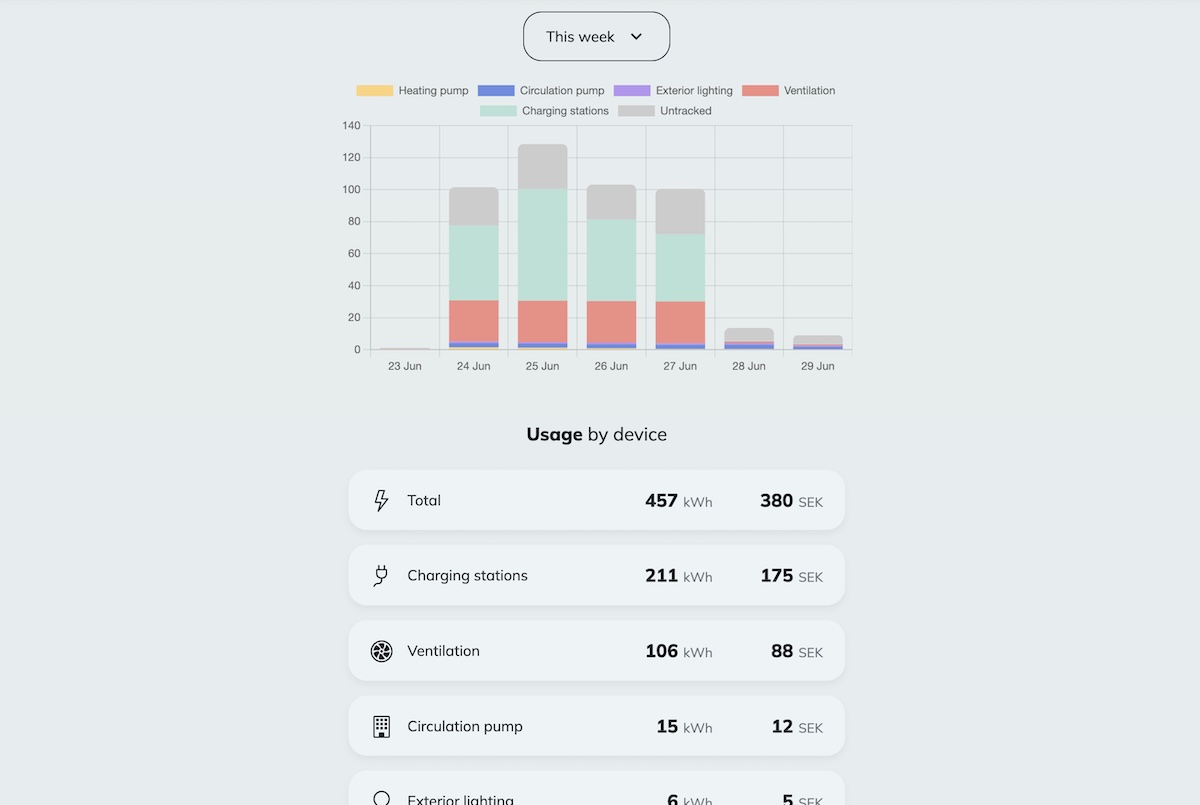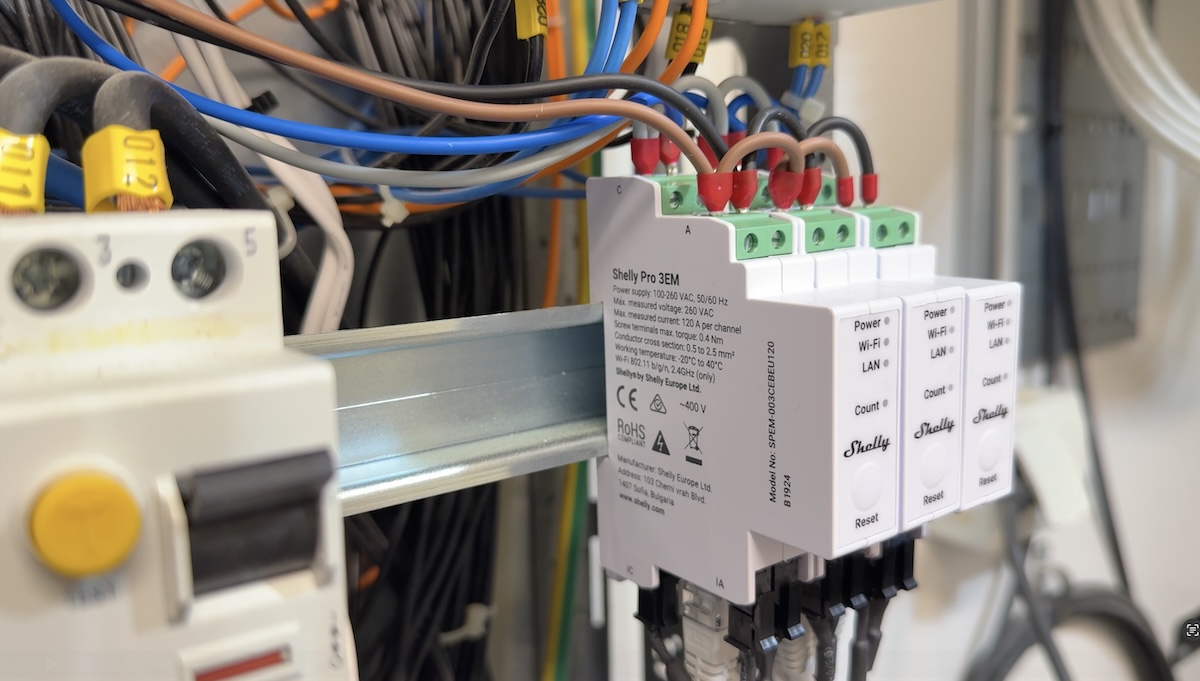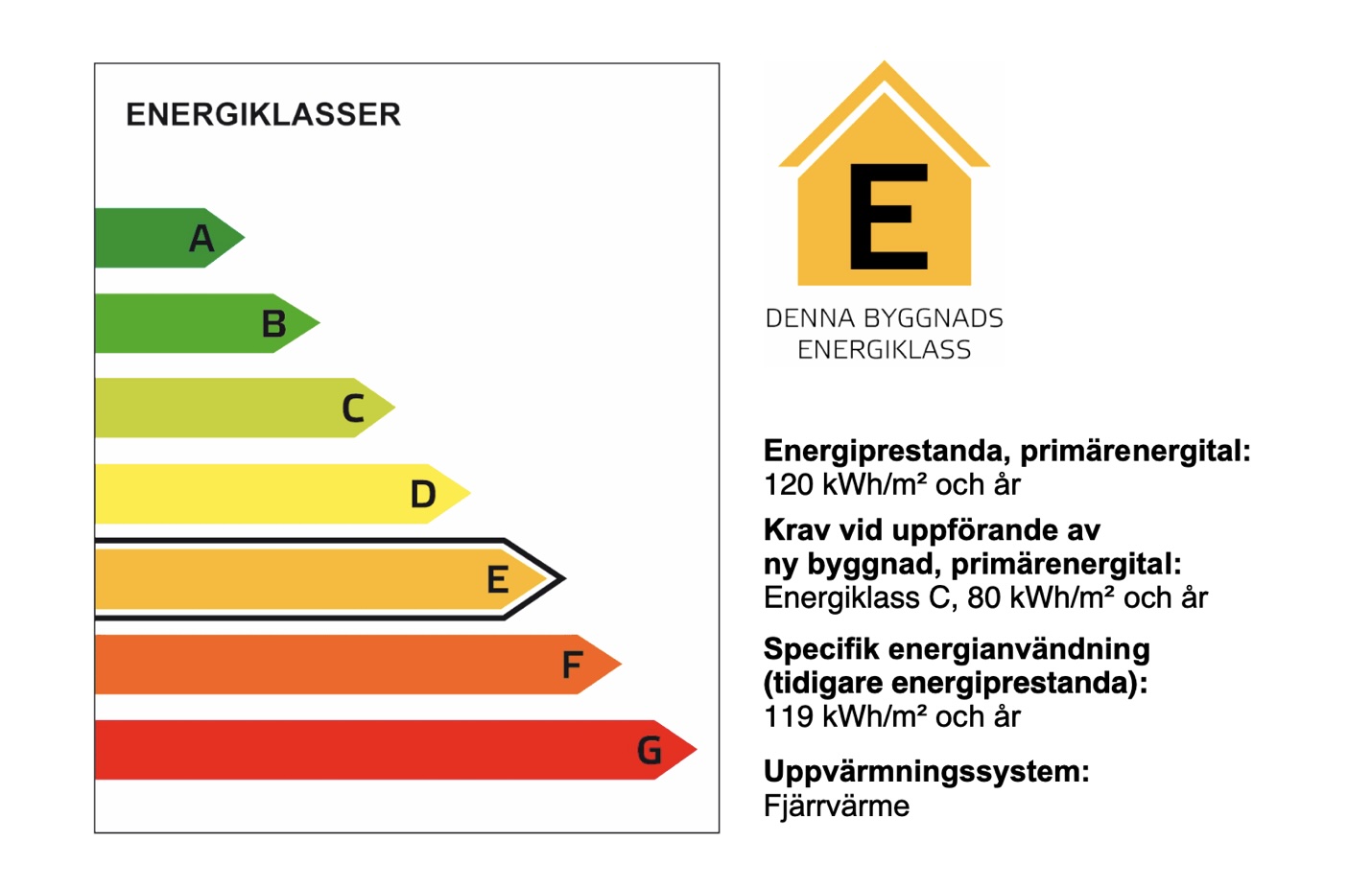The Challenge
In Sweden, building energy efficiency plays a critical role in determining a commercial property's market attractiveness and financial viability. Buildings with poor energy declarations face challenges in securing financing from banks and experience reduced interest from potential tenants. Alarmingly, even buildings with relatively high actual energy efficiency can receive unfavorable energy ratings if accurate consumption data is unavailable.
A key issue arises when energy declaration experts must rely on incomplete or generalized data. In many cases, only a single monthly utility bill is available, providing one total consumption figure. Without more granular data, experts are forced to distribute this total across different consumption categories—such as ventilation, heat pumps, cooling, and electric vehicle charging—based on industry average weights.
While this method aligns with standard practices, it often fails to reflect the building’s real energy profile, potentially leading to an inaccurate and undervalued energy declaration.
Our Approach
To address this gap, we implemented a solution centered on installing additional energy metering devices to track energy use across key consumption categories independently. By capturing real-time data for each system—such as ventilation, heating pumps, EV charging stations, and more, we moved away from the reliance on broad industry averages.
This approach allows energy declaration experts to see exactly how much energy each component consumes, enabling adjustments to be made based on the actual operational profile of the building. For instance, if EV charging stations are consuming more than the industry average due to high EV adoption among tenants, this increased load is now accurately attributed to that category.
In contrast, other categories like heating or ventilation might be consuming less than estimated, balancing the total use more fairly.

Category-level energy metering
Results and Impact
The introduction of detailed, category-level metering resulted in several significant benefits:
- Accurate Energy Declarations: Buildings received energy performance certificates that truly reflected their efficiency, rather than relying on generalized estimates.
- Enhanced Financing Opportunities: Banks were more confident in providing loans for properties with accurate energy data, facilitating easier access to funding.
- Increased Commercial Value: Properties became more attractive to potential tenants and investors, ultimately increasing their market value and ease of sale.
- Data-Driven Facility Management: Facility managers could identify inefficiencies and optimize energy use in real time, beyond the scope of the energy declaration process.

Shelly energy meter installation
Lessons Learned
- Data Quality Drives Valuation: High-quality, granular energy data can significantly alter the perception—and actual financial potential—of a commercial property.
- Industry Averages Can Mislead: Relying solely on generalized consumption models often penalizes buildings that are actually energy-efficient in practice.
- Metering is a Strategic Investment: Installing sub-metering infrastructure pays dividends not only in compliance and certification but also in long-term operational and financial performance.
- Customisation is Key: Every building has a unique energy consumption profile, and flexible metering solutions are essential to capture that complexity accurately.
- Not all energy meters are created equal: The choice of metering technology and its integration into existing systems can significantly impact the quality of data collected and the overall compatibility of the system.
- Metering installation can come with additional challenges: Buildings with older electricity box standards and limited access to the internet can provide additional integration challenges.

